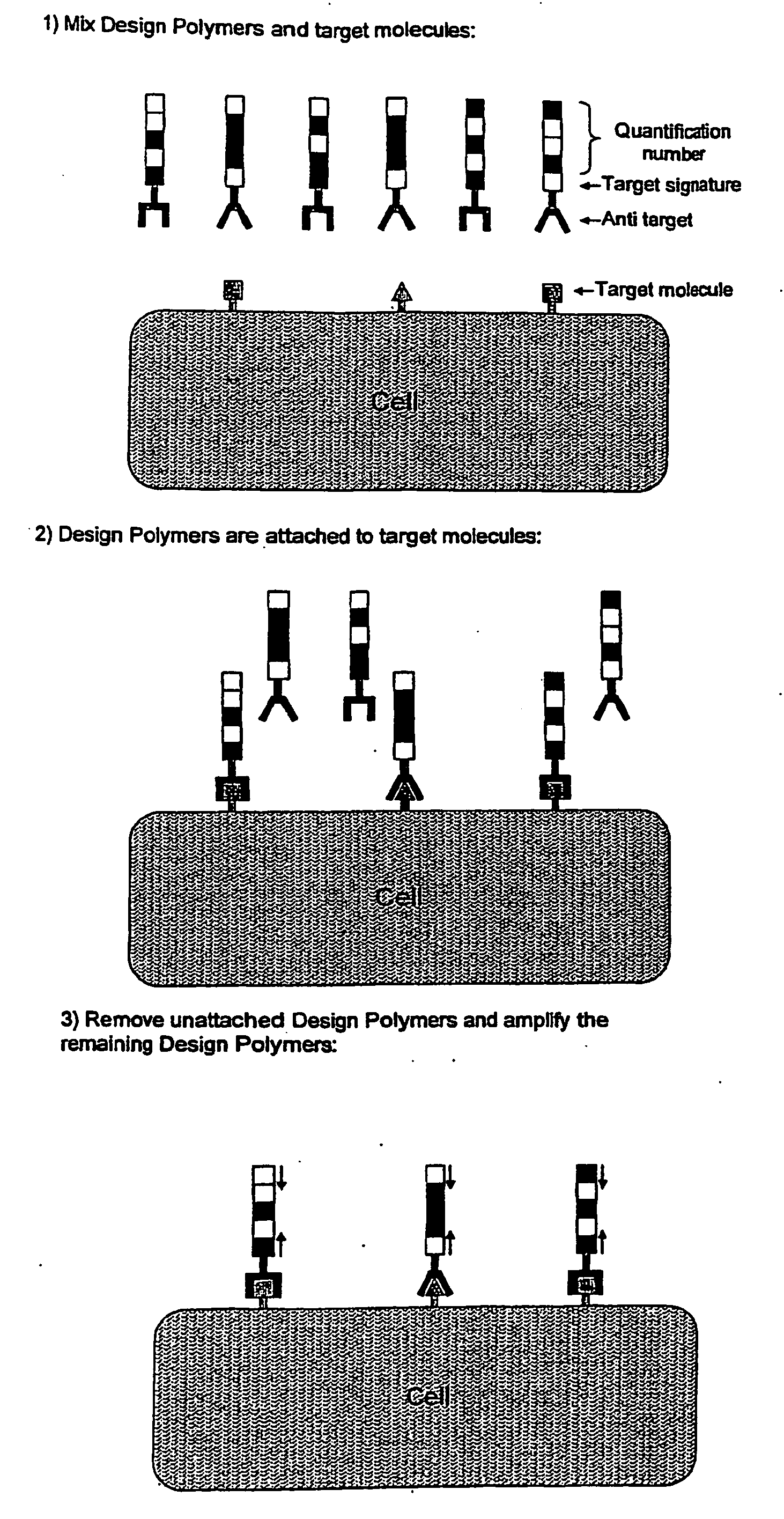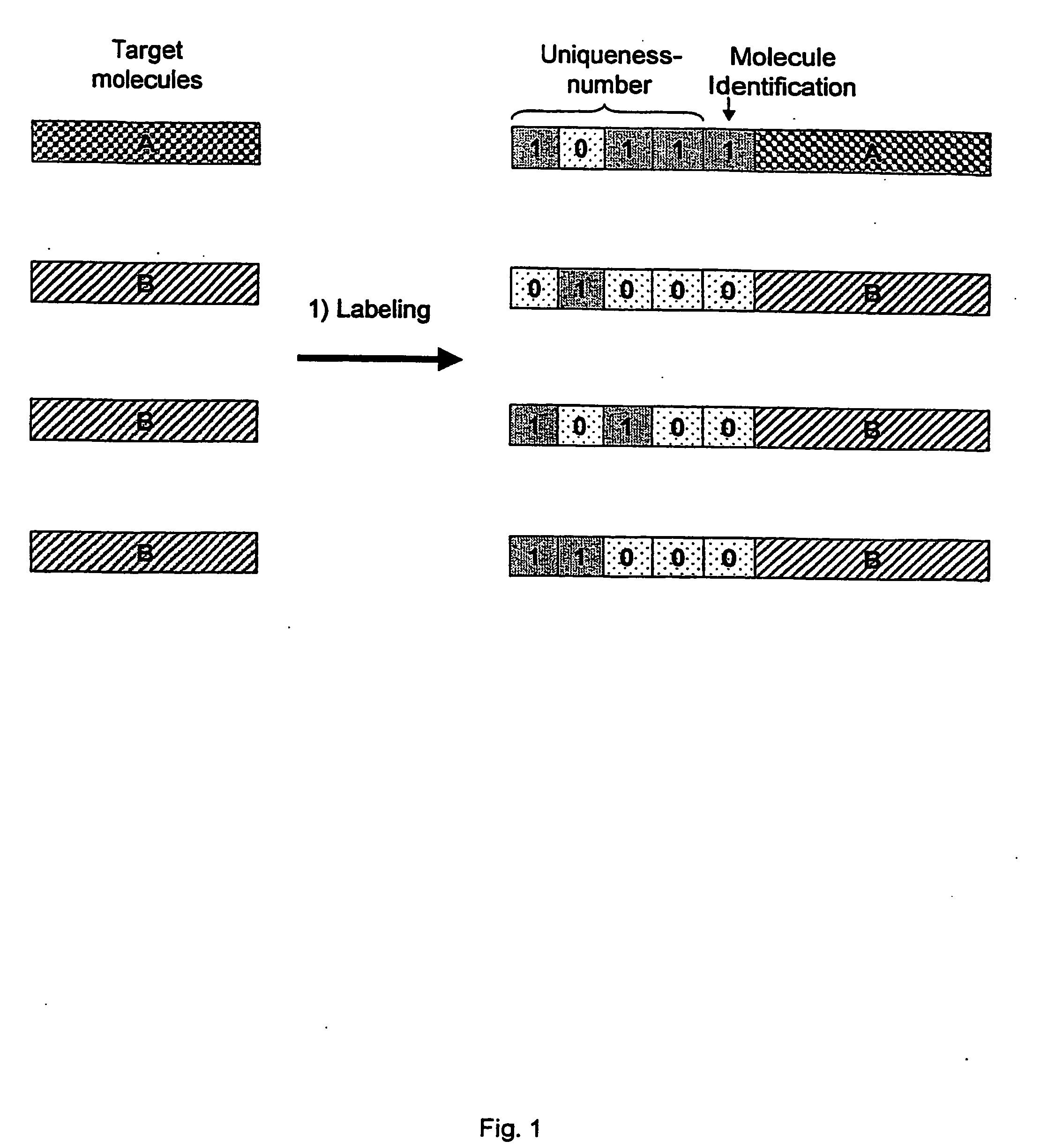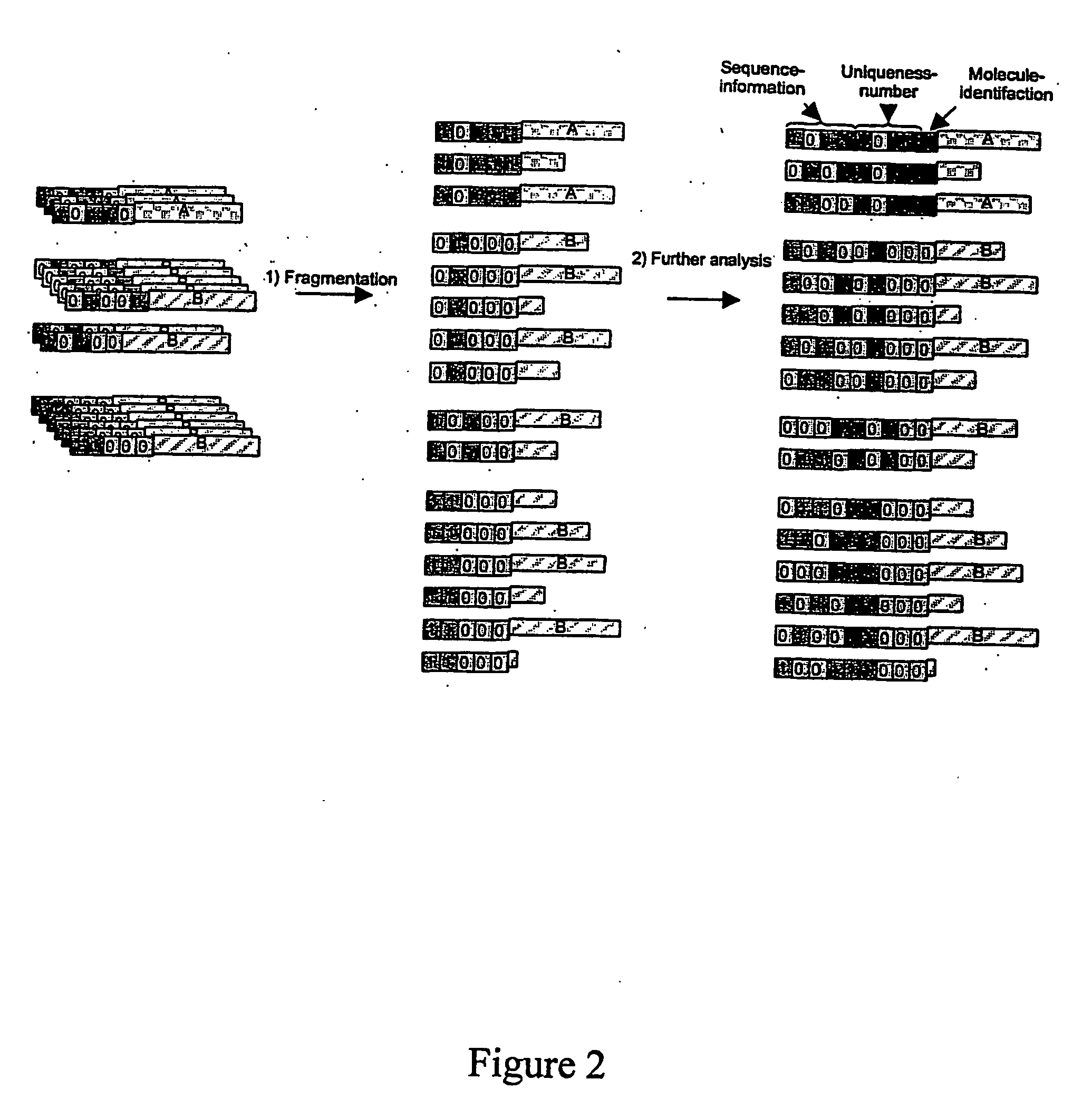Polynucleotide Ligation Reactions
a technology of polynucleotide and ligation reaction, which is applied in the direction of biochemistry apparatus and processes, instruments, material analysis, etc., can solve the problems of difficult to maintain information on each individual molecule, difficult to measure the absolute and relative amounts of the different target molecules present in the original sample, and the efficiency of such processes is subject to variation. , to achieve the effect of simplifying the reconstruction of sequence data
- Summary
- Abstract
- Description
- Claims
- Application Information
AI Technical Summary
Benefits of technology
Problems solved by technology
Method used
Image
Examples
Embodiment Construction
[0027]The present invention is used in the analysis of unique molecules. The molecule may be any molecule present in a sample which undergoes an analysis procedure. In a preferred embodiment, the molecules are polymers. The terms “polymer molecules” and “polymers” are used herein to refer to biological molecules made up of a plurality of monomer units. Preferred polymers include proteins (including peptides) and nucleic acid molecules, e.g. DNA, RNA and synthetic analogues thereof, including PNA. The most preferred polymers are polynucleotides.
[0028]The term “molecular tag” is used herein to refer to a molecule (or series of molecules) that imparts information about a target molecule to which it is attached. The tag has a unique defined structure or activity that represents the attached individual target molecule. The tag may also contain a second defined structure that represents the class (or sub-population) of target molecule. If the sample comprises a single class of molecules, ...
PUM
| Property | Measurement | Unit |
|---|---|---|
| Affinity | aaaaa | aaaaa |
Abstract
Description
Claims
Application Information
 Login to View More
Login to View More - R&D
- Intellectual Property
- Life Sciences
- Materials
- Tech Scout
- Unparalleled Data Quality
- Higher Quality Content
- 60% Fewer Hallucinations
Browse by: Latest US Patents, China's latest patents, Technical Efficacy Thesaurus, Application Domain, Technology Topic, Popular Technical Reports.
© 2025 PatSnap. All rights reserved.Legal|Privacy policy|Modern Slavery Act Transparency Statement|Sitemap|About US| Contact US: help@patsnap.com



